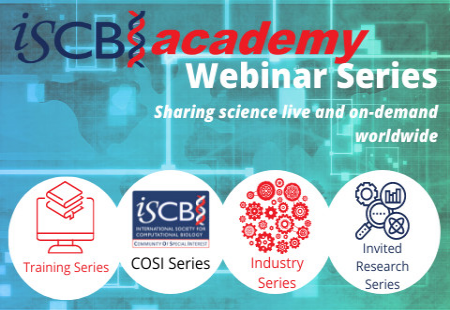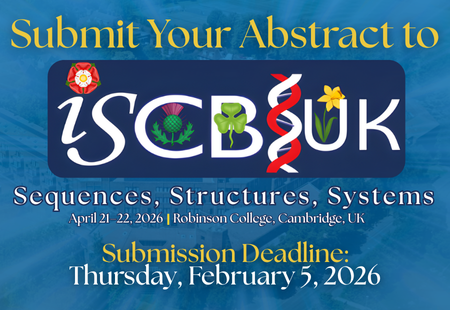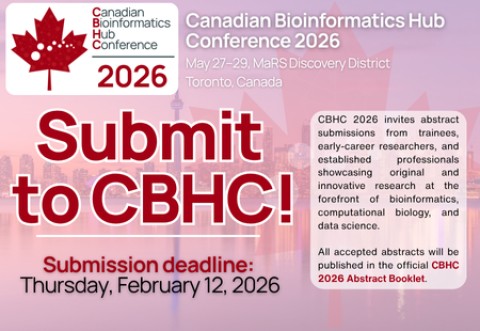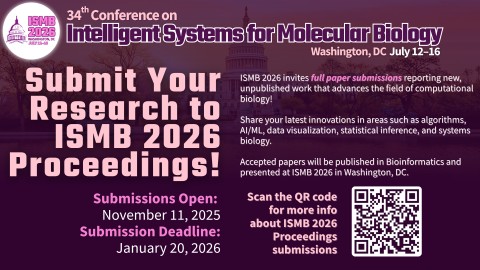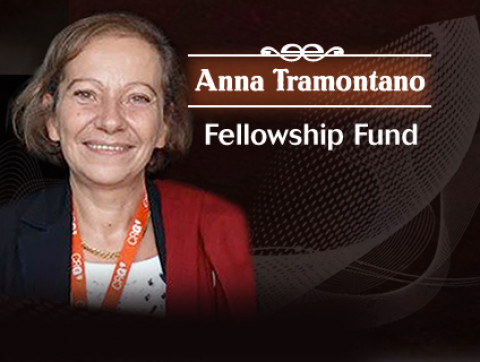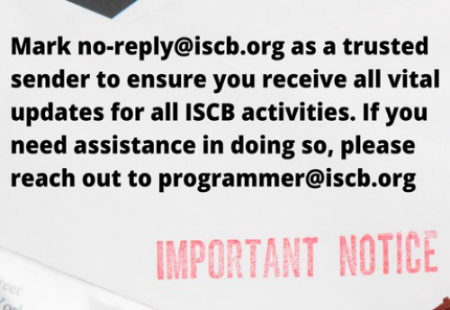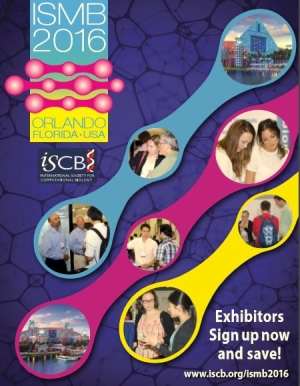Special Interest Groups (SIGs) & Satellite Meetings (SMs)
When preparing accepted posters please note that your poster should not exceed the following dimensions: 46 inches wide by 45 inches high. There will be 2 posters per side on the each poster board. One poster will be an odd number and the other will be an even number. View a diagram of the the poster board in pdf format here.
Satellite Meetings (SMs)
Special Interest Group Meetings (SIGs)
One-Day SIGs – Friday, July 8, 2016
One-Day SIGs – Saturday, July 9, 2016
Two-Day SIGs – Friday, July 8 and Saturday, July 9, 2016
Satellite Meetings (SMs)
3Dsig: Structural Bioinformatics & Computational Biophysics
Date: Friday, July 8 & Saturday, July 9
Start Time: 8:30 a.m - 6:00 p.m.
Room: Osprey 1/2 (Swan Hotel)
View Program
3Dsig Structural Bioinformatics & Computational Biophysics has become the largest meeting in this growing field. This year we are celebrating our 12th meeting. The keynote list will be announced shortly
In addition to keynotes our diverse program will include 20 talks selected from submitted abstracts, laptop software demos and poster sessions. Simply put, 3DSIG is the most comprehensive conference in the field and should not be missed by anyone using macromolecular structure to computationally unravel the mysteries of living systems.
Over the years, 3DSig has brought the leaders of the field of Structural Bioinformatics and Computational Biophysics in an ideal environment for personal contacts and discussions. The list of past keynotes includes: Russ Altman, Patricia Babbitt, Ivet Bahar, Nir Ben-Tal, Tom Blundell, Phil Bourne, James U. Bowie, Steven Brenner, Steve Bryant, Janusz Bujnicki, Stephen Burley, Amadeo Caflisch, Guido Capitani, Wah Chiu, Cyrus Chothia, Charlotte Deane, William Degrado, Roland Dunbrack, Keith Dunker, Aled Edwards, Arne Elofsson, Lucy Forrest, Stephen Friend, Dmitrij Frishman, Adam Godzik, David Goodsell, Nick Grishin, Kevin Karplus, Amy E. Keating, Tanja Kortemme, Gunnar von Heijne, Des Higgins, Barry Honig, David Jones, Lynn Kamerlin, Thomas Lengauer, Michael Levitt, Olivier Lichtarge, Andrei Lupas, François Major, George I. Makhatadze, Debora Marks, John Moult, Klaus Mueller, Masha Niv, Ruth Nussinov, Arthur Olson, Christine Orengo, Robert Preissner, Burkhard Rost, Rob Russell, Andrej Sali, Chris Sander, Jeffrey Saven, Tamar Schlick, Torsten Schwede, Luis Serrano, Brian Shoichet, Michael Schroeder, Kim A. Sharp, Jeffrey Skolnick Manfred Sippl, Michael Sternberg, Raymond Stevens, Joel Sussman, Sarah Teichmann, Devarajan Thirumalai, Janet Thornton, Anna Tramontano, Ron Unger, Alfonso Valencia, Sandor Vajda, Rebecca Wade, Harel Weinstein, Haim Wolfson and Ada Yonath.
Abstract submission deadline: TBD
April 15th – abstract submission deadline (to be considered for oral presentation)
Relevant topics are listed in http://bioinformatics.oxfordjournals.org/content/31/1/146.long These include:
- Macromolecular (tertiary and quarternay) structure prediction.
- Application of structure to systems biology and vice versa.
- Structure-based drug discovery including polypharmacology and network pharmacology.
- Structure representation, classification and prediction.
- Macromolecular assemblies and multi-domain protein structures.
- Structural genomics.
- 3D databases and data mining including integration and accessibility of methods and databases.
- Molecular visualization.
- Relevant methods of structure determination, particularly hybrid methods.
- Structure-based function prediction.
- Evolution Studied through structures and evolution (e.g. correlated mutations) utilized to predict and study structures
- Docking, analysis, prediction and simulation of biomolecular interactions such as protein-protein, protein-ligand and protein-nucleic acid.
- Chemical systems biology and small molecule docking simulations.
- Prediction and analysis of protein domains.
- Membrane protein structure analysis and prediction.
- Protein dynamics and disorder
- The structural basis of immunology.
- 3D RNA structures
- Protein engineering and synthetic biology.
We look forward to meeting you at 3Dsig
Philip E. Bourne (chair)
Associate Director for Data Science, National Institutes of Health, Bethesda, United States
This email address is being protected from spambots. You need JavaScript enabled to view it.
Rafael Najmanovich
Université de Sherbrooke, Canada
This email address is being protected from spambots. You need JavaScript enabled to view it.
Ilan Samish The Weizmann Institute of Science; and
Braude College of Engineering, Israel
This email address is being protected from spambots. You need JavaScript enabled to view it.
top
CAMDA 2016 Critical Assessment of Massive Data Analysis
Date: Friday, July 8 (begins at 4: 00 pm) & Saturday, July 9 (9:00 a.m - 5:45 p.m.)
Room:Macaw 1/2 (Swan Hotel)
Delegate Note:
We are delighted to welcome you to this year's meeting, featuring a range of diverse and exciting contributions of original research, and complemented by topical keynotes.
Please find this year's program at http://agenda.camda.info/
Please note that on Friday Camda opens at 4pm with a short session led by the keynote of Curtis Huttenhower (Harvard), followed by drinks and dinner, and the majority of the talks then take place in compact format on Saturday.
In anticipation of a lively and stimulating meeting and discussions we much look forward to welcoming you in Florida soon!
CAMDA focuses on the analysis and integration of the massive data sets now prevalent in the life sciences. It introduces new approaches and solutions to the Big Data problem, and presents new techniques in the field of bioinformatics, data analysis, and statistics for handling and processing challenging large data sets. By discussing cutting-edge problems and opportunities, the conference offers researchers from a wide range of fields a unique opportunity to benefit from a critical comparative evaluation of approaches to exploiting Big Data in the life-sciences.
This year, the scientific committee of CAMDA has set three data analysis contest challenges:
- The Oxford Nanopore ‘wiggle space’ challenge where several samples had their DNA sequenced by Nanopore long read next-next-generation sequencing as well as more established sequencing technology. This is then to be evaluated on a 'mystery' sample of patient microbiota.
- Sequencing Quality Control neuroblastoma study - a comparison of RNA-seq and Agilent microarray gene expression profiles for clinical endpoint prediction.
- A toxicogenomics study with matched NGS and microarray profiles for the response of over 100 rat livers to 27 chemicals with 9 different modes of action.
During on-line registration you will be able to buy tickets ($50.00) for the CAMDA dinner on Friday, July 8.
We cordially invite you to attend this year's CAMDA in Orlando!
Key Dates
May 20, 2016 - Extended Abstract Proposals Due
May 30, 2016 - Notification of Accepted Contributions
June 2, 2016 - Early Registration Closes
July 8 & 9, 2016 - CAMDA 2016
Sept. 25, 2016 - Full Paper Submission
Organizers:
Djork-Arné Clevert, JKU Linz, Austria
Joaquin Dopazo, CIPF, Spain
Lan Hu, Exosome Diagnostics, Cambridge, MA, USA
David Kreil, Boku University Vienna, Austria
Contact: This email address is being protected from spambots. You need JavaScript enabled to view it.
top
Special Interest Group Meetings (SIGs)
Bio-Ontologies
Date: July 8 & Saturday, July 9
Start Time: 8:30 a.m - 6:00 p.m.
Room: Mockingbird 1 (Swan Hotel)
Bio-Ontologies has been a Special Interest Group (SIG) at ISMB for the last 18 years, providing a vibrant environment for reporting novel methods and sharing experiences on the construction and application of ontologies in the life sciences. The informal nature of the SIG offers a constructive environment to nurture discussion of innovative and scientifically sound work from both young and experienced investigators alike.
Key Dates:
- April 8th, 2016 Submissions Due
- May 6th, 2016 Notifications
- May 13th, 2016 Final Version Due
Topics:
Papers are welcome in traditional areas, such as the biological applications of ontologies, newly developed Bio-Ontologies, and the use of ontologies in data sharing standards. In addition, papers will also be welcomed in the following areas:
- Semantic Web Enabled Applications
- Bio-Curation Platforms
- Use of Ontologies in Data Standards
- Role of Bio-Ontologies in the Learning Health System
- Collaborative Ontology Authoring
- Deep learning with Ontologies
- Automated Annotation Pipelines
- Use of ontologies in text mining applications
- Ontology growth, mapping and repair
- Research in Ontology Evaluation
- "Flash updates" on Newly Developed or Existing Bio-Ontologies
As we have done over the past 2 years, the second day is focused on phenotypes. Phenotype day will once again bring researchers together from across many disciplines to share information about phenotype resources and issues as well as experiences with defining, representing, processing and using phenotype data.
Organizers:
Michel Dumontier, Stanford University, United States, This email address is being protected from spambots. You need JavaScript enabled to view it.
Nigam Shah, Stanford University, United States, This email address is being protected from spambots. You need JavaScript enabled to view it.
Philippe Rocca-Serra, University of Oxford, United Kingdom, This email address is being protected from spambots. You need JavaScript enabled to view it.
Karin Verspoor, University of Melbourn, Australia, This email address is being protected from spambots. You need JavaScript enabled to view it.
Phenotype Day co-ordinators: Nigel Collier, Anika Oellrich, Tudor Groza, and Karin Verspoor
Contact: This email address is being protected from spambots. You need JavaScript enabled to view it.
top
BioVis SIG
Date: Friday, July 8
Start Time: 8:30 a.m - 6:00 p.m.
Room: Pelican 2 (Swan Hotel)
Keynote Speaker
To be announced
The rapidly expanding field of biology creates enormous challenges for the computational visualization techniques that are necessary in order to enable researchers to gain insight from their large and highly complex data sets.
The Symposium on Biological Data Visualization (BioVis) is the premier international and interdisciplinary event for all aspects of visualization in biology. The symposium brings together researchers from the visualization, bioinformatics, and biology communities with the purpose of educating, inspiring, and engaging visualization researchers in problems in biological data visualization, as well as bioinformatics and biology researchers in state-of-the-art visualization research. The symposium serves as a platform for researchers from these fields to increase the impact of data visualization approaches in biology. The breadth and diversity of biological research topic areas will enable researchers from all parts of the visualization and bioinformatics communities to contribute to this effort and the symposium will provide an excellent opportunity to initiate interdisciplinary collaborations.
Forms of participation: Find the latest information on the BioVis website (http://biovis.net). We offer three possibilities to participate:
1) Highlights
Participants may submit an abstract describing work published in the previous year as well as additional work undertaken since publication. The program committee will review these abstracts. Additionally, the BioVis SIG program committee will also invite authors of outstanding publications from other venues. The authors of selected abstracts will be asked to present a short oral presentation during the SIG meeting.
2) New Research:
Participants are invited to submit an abstract describing high-quality original research. Abstracts will be reviewed by the program committee and all accepted abstracts will be included in the poster session. The authors of selected abstracts will be asked to give a brief oral presentation during the SIG meeting.
3) Posters:
We seek work in progress and preliminary results; previously published work from other venues; visualization challenges. Submissions consist of a 250 word abstract and an image.
Key Dates:
May 1, 2016 - Submission deadline for the Highlights
May 1, 2016 - Submission deadline for New Research
May 29, 2016 - Poster abstract submission
*(all deadlines are 5:00pm PDT)
Co-Organizers:
Kay Nieselt, University of Tübingen, Germany, This email address is being protected from spambots. You need JavaScript enabled to view it.
Nils Gehlenborg, Harvard Medical School, Department of Biomedical Informatics, This email address is being protected from spambots. You need JavaScript enabled to view it..
G. Elisabeta Marai, University of Illinois at Chicago, USA, This email address is being protected from spambots. You need JavaScript enabled to view it.
Jan Aerts, KU Leuven, Department of Bioinformatics, This email address is being protected from spambots. You need JavaScript enabled to view it.
Contact:
This email address is being protected from spambots. You need JavaScript enabled to view it.
top
BOSC: 17th Annual Bioinformatics Open Source Conference
Date: Friday, July 8 & Saturday, July 9
Start Time: 8:30 a.m - 6:00 p.m.
Room: Swan 3 (Swan Hotel)
The Bioinformatics Open Source Conference (BOSC) is run as a two-day meeting before the annual ISMB conference. It is sponsored by the Open Bioinformatics Foundation (OBF), a non-profit group dedicated to promoting the practice and philosophy of open source software development and open science within the biological research community. Since its inception in 2000, BOSC has provided bioinformatics developers with a forum for communicating the results of their latest efforts to the wider research community. BOSC offers a focused environment for developers and users to interact and share ideas about standards; software development practices; practical techniques for solving bioinformatics problems; and approaches that promote open science and sharing of data, results and software. Two full days of talks, posters, panel discussions, and informal discussion groups enable BOSC attendees to interact with other developers and share ideas and code, as well as learning about some of the latest developments in the field of open source bioinformatics.
We welcome one-page abstracts on any topic of relevance to open source bioinformatics and open science. Some of the abstracts will be chosen for lightning talks, longer talks, and/or posters. We are offering a limited number of travel fellowships to help offset expenses for some accepted speakers who would not otherwise be able to attend BOSC. Details are available at: http://news.open-bio.org/2016/03/01/obf-travel-fellowship-program/
Key dates:
Call for one-page abstracts opens: March 1, 2016
Abstract submission deadline for full talks: April 4, 2016
Abstract submission deadline for Late-Breaking Lightning Talks and posters: June 2, 2016
Notification of acceptance for Late-Breaking Lightning Talks and posters: June 10, 2016
BOSC 2016: July 8-9, 2016
ISMB 2016: July 8-12, 2016
Session topics:
Open Science and Reproducible Research
Standards and Interoperability
Data Science
Workflows
Developer Tools and Libraries
Panel: Growing and sustaining open source communities
Keynote speakers: Jennifer Gardy (University of British Columbia / British Columbia Centre for Disease Control)
Steven Salzburg (Johns Hopkins University)
Co-Chairs:
Nomi L. Harris <This email address is being protected from spambots. You need JavaScript enabled to view it.> (Lawrence Berkeley National Laboratory, USA)
Peter Cock <This email address is being protected from spambots. You need JavaScript enabled to view it.> (James Hutton Institute, Scotland, UK)
Organizing Committe members:
Brad Chapman (Harvard School of Public Health, USA)
Christopher Fields (National Center for Supercomputing Applications, USA)
Karsten Hokamp (Smurfit Institute of Genetics, Trinity College Dublin, Ireland)
Hilmar Lapp (Duke University, USA)
Mónica Muñoz-Torres (Lawrence Berkeley National Laboratory, USA)
Heather Wiencko (Equinome Ltd., UK)
top
Function SIG (formerly AFP-SIG)
Date: Saturday, July 9
Start Time: 8:30 a.m - 6:00 p.m.
Room: Parrot (Swan Hotel)
The accurate annotation of protein function is key to understanding life at the molecular level. However, with its inherent difficulty and expense, experimental characterization of function cannot scale up to accommodate the vast amount of sequence data already available. The computational annotation of protein function has therefore emerged as a problem at the forefront of bioinformatics. Recently, the availability of genomic-level sequence information for thousands of species, coupled with massive high-throughput experimental data, has created new opportunities as well as challenges for function prediction. Many methodologies have been developed by research groups worldwide, many based in comparing unsolved sequences with databases of proteins whose functions are known. Other methods aim at mining the scientific literature associated with some of these proteins, yet others combine sophisticated machine-learning algorithms with an understanding of biological processes to decipher what these proteins do.
The mission of the Function Special Interest Group (Formerly Automated Function Prediction SIG) is to bring together computational biologists, experimental biologists and biocurators who are dealing with the important problem of gene and gene product function prediction, to share ideas and create collaborations. The Function SIG holds annual meetings alongside the ISMB. Also, we are conducting the multi-year Critical Assessment of protein Function Annotation, or CAFA, experiment.
Talks are sought in, but not limited to, the following topics:
- Computational function prediction methods using anything from protein sequence to -omics data.
- Discussions of the limitations and horizons of computational function prediction.
- Assessing function prediction programs
- Talks about the CAFA experiment, including critiques, new initiatives, and overviews
- The evolution of protein function
Key Dates:
- March 1, 2016: Call for abstracts (talks & posters) opens
- April 6, 2016: Deadline for submitting abstracts
- May 9, 2016: Authors notified of abstract status
- July 9, 2016: Function SIG Orlando, FL, USA
- July 8-12, 2016: ISMB 2016, Orlando, FL, USA
Keynote Speakers:
Trey Ideker, University of California, San Diego, USA
Constance Jeffery, University of Illinois, Chicago, USA
Organizers:
Casey Greene: University of Pennsylvania, USA This email address is being protected from spambots. You need JavaScript enabled to view it.
Mark Wass Kent University, UK This email address is being protected from spambots. You need JavaScript enabled to view it.
Predrag Radivojac, Indiana University, USA This email address is being protected from spambots. You need JavaScript enabled to view it.
Sean Mooney, University of Washington, USA This email address is being protected from spambots. You need JavaScript enabled to view it.
Iddo Friedberg Iowa State University, USA This email address is being protected from spambots. You need JavaScript enabled to view it.
top
HitSEQ 2016: High Throughput Sequencing Algorithms & Applications
Date: Friday, July 8 & Saturday, July 9
Start Time: 8:30 a.m - 6:00 p.m.
Room: Swan 1/2 (Swan Hotel)
The Conference on High Throughput Sequencing Methods and Applications (HiTSeq 2016) is a Satellite of the ISMB 2016 conference and brings together biologists and computational scientists interested in exploring the challenges and opportunities in the analysis of high-throughput sequencing (HTS) technologies. HiTSeq 2016 is devoted to the latest advances in computational techniques for the analysis of high-throughput sequencing data including novel algorithms, analysis methods and applications in biology where high-throughput sequencing data has been transformative. It provides a forum for in-depth presentations of novel algorithms, analysis methods, and applications in multiple areas of biology that HTS is transforming. This year we are hosting two special emphasis sessions on “HTS in cancer genomics & precision oncology” and “Single molecule sequencing applications”. We are soliciting high-quality full papers that will undergo rigorous peer-review. Special consideration will be given to works on the emphasis areas of this year, but other topics as described below are welcome as well. If accepted, these contributions will be presented at the conference and published in Bioinformatics online. Simultaneously, short abstract submissions will be accepted for either a brief oral presentation or presentation during the poster session.
Possible Topics include:
- Cancer genomics and precision oncology (special topic)
- Single Molecule Sequencing & Read-Cloud Applications (special topic)
- Detecting genome variation
- Transcriptome analysis
- Epigenomics and chromatin regulation (including 5-C, Hi-C etc.)
- Clinical genomics
- Metagenomics
- Human microbiome
- Analysis of 3rd and 4th generation sequencing platform data
- Integration of HTS data from distinct “omics” assays
- Sharing and Federation of HTS “Big Data”
Key Dates/Deadlines
Full paper deadline: April 5
Abstract deadline: May 11
Author notifications: May 25
Early Registration Ends: June 2
Meeting Program: July 8-9
Organizers:
Can Alkan, Ph.D.
Bilkent University, Ankara 06800, Turkey
Valentina Boeva, Ph.D.
Institut Curie, Paris 75005, France
Ana Conesa, Ph.D.
University of Florida, Gainesville, Florida, USA
Francisco M. De La Vega, D.Sc.
Stanford University, Stanford CA, USA
Dirk J. Evers, Ph.D.
Molecular Health GmbH, Heidelberg, Germany
Kjong-Van Lehmann, Ph.D.
Memorial Sloan-Kettering Cancer Center, New York, NY, USA
Editorial Coordination:
Gunnar Rätsch, Ph.D.
Memorial Sloan-Kettering Cancer Center, New York, NY, USA
top
Integrative RNA Biology - SIG (IRB-SIG)
Date: Friday, July 8
Start Time: 8:30 a.m - 7:00 p.m.
Room: Mockingbird 2 (Swan Hotel)
The meeting for Integrative RNA Biology brings together computational and experimental experts that drive new advances in RNA biology and overcome the computational challenges involved. The meeting covers different aspects of RNA biology as they relate to phenotype, disease and therapeutics. Aspects of RNA Biology covered in the meeting include alternative splicing, alternative polyadenylation (APA), post-transcriptional regulation, RNA 2D/3D structure, and the expression and function of non-coding RNAs, such as micro-RNAs (miRNAs) and long non-coding RNAs (lncRNA). Studying these aspects of RNA using high-throughput technologies such as RNA-Seq and CLIP-Seq raise many computational challenges that are discussed at the meeting. Join us to learn more about cutting edge RNA related research and the computational challenges involved. The meeting includes invited talks, short talks selected from submitted abstracts, and an interactive poster session with a poster prize. The meeting concludes with a dinner that will give you a chance to mingle and interact with organizers, speakers, and other attendees in an informal and relaxed setting. Limited travel support for students/postdocs (could also be used for child care if traveling with family) may also be available, courtesy of the RNA Society. More details about key dates, abstract submission process and invited speakers can be found at: http://irbgroup.org/irb-sig-16/
We hope to see you with us at the IRB-SIG 2016 in Orlando.
Confirmed Speakers:
Olga Troyanskaya, Princeton, United States
Christine Mayr, MSKCC, United States
Hagen Tilgner, Weill Cornell, United States
Simon (Hualin) Xi, Pfizer, United States
IRB-SIG Traditional Dinner:
Please join us for the traditional IRB-SIG dinner!
Date: July 8th Time: 7:30pm Place: TBD
Price: $60.00 (tickets available for purchase during on-line registration)
*Note: To join the dinner you need to include it during the registration process.
Abstract Submission Instructions:
Organizers:
Yoseph Barash, University of Pennsylvania, United States This email address is being protected from spambots. You need JavaScript enabled to view it.
Eduardo Eyras , UPF & ICREA, Barcelona, Spain, This email address is being protected from spambots. You need JavaScript enabled to view it.
Klemens Hertel, UC Irvine, United States, This email address is being protected from spambots. You need JavaScript enabled to view it.
top
NetBio SIG
Date: Friday, July 8
Start Time: 8:30 a.m - 6:00 p.m.
Room: Swan 4 (Swan Hotel)
Biological networks provide a context for integrating and analyzing massive amounts of diverse kinds of measurement data, such as expression data from RNA-Seq, protein abundance and interaction data from mass spectrometry, and genetic data from association studies. Network theory provides powerful analysis techniques that can be used to develop insights into large amounts of data. Our use of networks in biology has changed from purely representational and didactic purposes to more analytic and hypothesis formulation purposes. This shift has resulted, in part, from the confluence of advances in computation, informatics, and high throughput techniques in systems biology.
We will solicit abstracts that cover new developments in network biology, focusing on two major areas: (1) the development of network-related tools and resources, and (2) the application of network analysis and visualization in the study of biology, synthetic biology and medicine. The meeting will provide a unique meeting space for tool developers and users in the field of network biology. Through these complementary lenses, the meeting will bring into focus the current state of the field, its future promise and how to get there.
How to Participate:
Find the latest information including how to submit an abstract for the upcoming meeting at the NetBio community site. In addition to the annual meeting, the NetBio group functions year-round as an international virtual community supporting and co-organizing multiple meetings, connecting researchers, results, resources and training opportunities. Find out more via the NetBio Group at LinkedIn (https://www.linkedin.com/groups/5123610).
Keynote Speakers:
• Lars Juhl Jensen: Gene Association Networks: Large-scale Integration of Data and Text - University of Copenhagen, Denmark
• Olga Troyanskaya - Gene Function and Regulation in Biological Networks - Princeton University, NJ, USA
• Franca Fraternali - Molecular Determinants of Protein-Protein Interactions - King's College London, UK
• Nataša Pržulj - Patient-Specific Network Data Fusion for Stratification, Biomarker Discovery and Personalized Treatment - University College London, UK
Organizers:
Alexander Pico, Gladstone Institutes, United States, This email address is being protected from spambots. You need JavaScript enabled to view it.
Scooter Morris, University of California, San Francisco, United States, This email address is being protected from spambots. You need JavaScript enabled to view it.
Gary Bader, University of Toronto, Canada, This email address is being protected from spambots. You need JavaScript enabled to view it.
Mario Albrecht, Graz University of Technology, Austria, This email address is being protected from spambots. You need JavaScript enabled to view it.
Natasa Przulj, University College London, This email address is being protected from spambots. You need JavaScript enabled to view it.
Esti Yeger Lotem, National Institute for Biotechnology in the Negev, Israel, This email address is being protected from spambots. You need JavaScript enabled to view it.
Frank Kramer, University Medical Center Göttingen, Germany, This email address is being protected from spambots. You need JavaScript enabled to view it.
Martina Kutmon, University of Maastricht, The Netherlands, This email address is being protected from spambots. You need JavaScript enabled to view it.
Rudolf Pillich, University of California, San Diego, United States, This email address is being protected from spambots. You need JavaScript enabled to view it.
Gerald Quon, University of California, Davis, United States, This email address is being protected from spambots. You need JavaScript enabled to view it.
top
Regulatory Genomics Special Interest Group (RegGenSIG)
Date: Saturday, July 9
Start Time: 8:30 a.m - 6:00 p.m.
Room: Swan 4 (Swan Hotel)
Download Program
Regulatory genomics involves the study of the genomic "control system", which determines how, when and where to activate the "blueprint" encoded in the genome. Regulatory genomics is the topic of much research activity worldwide. Since computational methods are important in the study of gene regulation, the RegGenSIG meeting focuses on bioinformatics for regulatory genomics. An important goal of the meeting is to foster a collaborative community wherein scientists convene to solve difficult research problems in all areas of computational regulatory genomics.
RegGenSIG is an activity of the ISCB Special Interest Group for Regulatory Systems Genomics, a community of shared interest that has multiple activities and interactions throughout the year, rather than solely meeting during the ISMB conference. An important goal of the SIG is to foster a topically-focused collaborative community wherein scientists communicate with one another on research problems and/or opportunities in the area of computational biology as it pertains to regulatory and systems genomics. The SIG holds two meetings per year, (1) RegGenSIG and (2) The RECOMB/ISCB Conference on Regulatory and Systems Genomics and DREAM Challenges.
CALL FOR ABSTRACTS
To make an oral presentation at RegGenSIG, a one-page abstract should be submitted by April 18, 2016 (see format below). Based on the submitted abstracts, selected authors will be invited for oral presentation. Authors will be notified by May 2, 2016. Abstracts submitted for oral presentation may also be considered for poster presentation.
For poster presentations, authors should submit a one-page abstract no later than May 9, 2016. Author notification will occur no later than May 23, 2016.
ABSTRACT SUBMISSION INSTRUCTIONS
For oral presentations, a one-page abstract should be submitted by April 18, 2016, to Jason Ernst (This email address is being protected from spambots. You need JavaScript enabled to view it.), with Subject: "RegGenSIG 2016 - Abstract for oral presentation".
For poster presentations, a one-page abstract should be submitted by May 9, 2016, to Jason Ernst (This email address is being protected from spambots. You need JavaScript enabled to view it.), with Subject: "RegGenSIG 2016 - Abstract for poster presentation".
Please use the template found on the RegGenSIG web page for abstracts (both oral and posters). The abstracts will be made available via this web page before the SIG.
KEY DATES
April 18, 2016 - Due date for abstracts for oral presentations
May 2, 2016 - Author notification for oral presentations
May 9, 2016 - Due date for abstracts for poster presentation only
May 23, 2016 - Author notification for poster presentations
June 2, 2016 - Early registration discount cut-off date
July 9, 2016 - RegGenSIG meeting
RegGenSIG Organizers
Stein Arts, University of Leuven, Belgium, This email address is being protected from spambots. You need JavaScript enabled to view it.
Finn Drablos, Norwegian University of Science and Technology, Norway, This email address is being protected from spambots. You need JavaScript enabled to view it.
Jason Ernst, University of California, Los Angeles, United States, This email address is being protected from spambots. You need JavaScript enabled to view it.
Saurabh Sinha, University of Illinois Urbana, United States, This email address is being protected from spambots. You need JavaScript enabled to view it.
Lonnie Welch, Ohio University Athens, United States, This email address is being protected from spambots. You need JavaScript enabled to view it.
Julia Zeitlinger, Stowers Institute for Medical Research, United States, This email address is being protected from spambots. You need JavaScript enabled to view it.
top
SysMod: Computational modeling of biological systems
Date: Saturday, July 9
Start Time: 9:00 a.m. - 5:30 p.m.
Room: Pelican 1 (Swan Hotel)
SysMod aims at bridging the gap between bioinformatics and systems biology modeling. Recently, aspects of the two fields have converged. Systems modeling has become more reliant on bioinformatics network inference to build models and has begun to use transcriptomics and proteomics data to train models. In addition, more communication between systems modellers and bioinformaticians is needed to build models of whole cells, organs and organisms. Furthermore, the promises of precision medicine lie, in part, on the interplay between bioinformatics-based analysis of patient data and model-based predictions of treatments.
Topics:
The SIG will welcome the presentation of all all types of modeling applied to any biological question. This includes, but is not limited to, chemical kinetics, reaction-diffusion models, constraint-based reconstruction and analysis, multi-agents, qualitative models, hybrid models, multi-scale approaches, PBPK/PD modelling, efficient solvers and algorithms, visualization techniques. This year we seek in particular contributions falling within two major classes:
Modeling metabolism: from kinetics to the whole genome
Over the past 20 years flux balance analysis together with whole-genome sequencing have enabled researchers to construct detailed genome-scale models of metabolism. More recently, researchers have integrated transcriptomics and proteomics data into flux balance analysis models to generate more accurate predictions. This session will feature two keynote talks on the state-of-the-art of genome-scale modeling, how it can be enhanced through combination with genomic data, and its prospects for precision medicine and microbial engineering.
When modeling biochemistry breaks down: Logic and Rule-based modeling
"Classical" dynamical modeling relies on the enumeration of biochemical components and processes, as well as large numbers of quantitative parameters. However, this information is often difficult to obtain. In addition, covalent modifications and assemblies of macromolecules cause a combinatorial explosion of states which is intractable to traditional methods. Several approaches have been designed to overcome these shortcomings and take advantage of the information that is available. This session will feature two keynote talks on logical and rule-based modeling from two researchers who have been instrumental in developing these methods and using these methods to analyze genome-scale data.
How to participate:
The SIG will feature presentations from invited keynote speakers, presentations selected from submitted abstracts and a poster session. Flash presentations will be offered to introduce posters. Details of the abstract submission procedure will be available at http://sysmod.info
Keynote Speakers:
Vincent Danos; CNRS, France; University of Edinburgh, United Kingdom Vassily Hatzimanikatis; EPFL, Switzerland Nathan Price; ISB, USA; University of Washington, United States Ioannis Xenarios; Swiss Institute of Bioinformatics, Switzerland
Key Dates:
- April 2, 2016 - Abstract submissions deadline
- April 29, 2016 - Poster and Presentation acceptance notifications.
- May 13, 2016 - Final programme available
- June 2, 2016 - Early registration ends
- July 9, 2016 - SysMod SIG
Organizers:
Laurence Calzone, Curie Institute, Paris, France
Andreas Dräger, University of California, San Diego, United States
Jonathan Karr, Icahn School of Medicine at Mount Sinai, New York, United States
Nicolas Le Novère, The Babraham Institute, Cambridge, United Kingdom
Susanna Neves, Icahn School of Medicine at Mount Sinai, New York, United States
Julio Saez-Rodriguez, Aachen University, Aachen, Germany
For more information, contact: This email address is being protected from spambots. You need JavaScript enabled to view it.
top
TransMed 2016: Translational Medicine Informatics & Applications
Date: Friday, July 8
Start Time: 8:30 a.m - 6:00 p.m.
Room: Pelican 1 (Swan Hotel)
Knowledge-based translational medicine is a rapidly growing discipline in biomedical research and aims to expedite the discovery of new diagnostic tools and treatments by using a multi-disciplinary, highly collaborative, "bench-to-bedside" approach. Large amounts of multi-omics, imaging (medical and molecular) and clinical data can now be captured for given patient populations. In addition to the challenges of data curation and harmonisation, new computational methods are required to identify molecular signatures that suggest disease subtype. These signatures may be predictive of outcome or progression, and impact on disease management by suggesting personalised therapeutic strategies for patients. Such approaches will further the development of a new taxonomy of disease.
In the TransMed SIG meeting, we will explore the current status of computational biology approaches within the field of translational medicine.
Topics of interest include, but are not limited to:
Clinical and molecular data storage and integration infrastructure, including: data warehousing for translational medicine, multi-‘omics and clinical data integration, data visualization in translational medicine
Curation and harmonization of clinical, ‘omics and imaging data, including: standards and ontologies in translational medicine, biomedical text mining and semantic representation
Data analytics for patient stratification, biomarker and target discovery, including: disease subtype discovery, Electronic Health Records integration, translational imaging, multi-scale modelling, high performance and cloud computing in translational medicine, mathematical modelling for disease processes, pathways and networks
Computational approaches for target selection and drug discovery, including: druggability assessment and target selection, polypharmacology, drug reuse, chemical library design, virtual screening technologies, drug discovery enabler pipelines and databases, chemical tool analysis.
ADME/PK and Tox models, including: databases and modeling approaches for ADME and PK, machine learning approaches to predicting toxicity, modeling of pharmacokinetics to man and model organism utility models.
Translational Medicine Informatics Applications/Case Studies, including: Next generation sequencing annotation and biomedicine applications, clinical data integration and application.
Abstract Submission
Authors are invited to submit abstracts (1 page) for presentations and posters by April 10, 2016. Acceptance notifications will be sent out by April 29, 2016. Details of submission process will be made available on the TransMed2016 SIG website.
Keynote Speakers Confirmed:
Russ Altman, Professor of Bioengineering, Genetics, Medicine and Computer Science; Director, Biomedical Informatics Training Program, School of Medicine, Stanford University
John Overington, Director of Bioinformatics at Stratified Medical, Visiting Professor at the Institute of Cardiovascular Science, University College London and the Farr Institute
Sean Mooney, Professor of Biomedical Informatics and Medical Education, University of Washington; Chief Research Information Officer (CRIO) of UW Medicine
Key Dates: (*revised May 16)
March 1, 2016 - Call for one-page abstracts opens
May 27, 2016* - Abstract submissions deadline
May 31, 2016* - Poster and Presentation acceptance notifications.
June 10, 2016* - Final program available
July 8, 2016 - TransMed 2016 SIG
Organizers:
Venkata Satagopam, Luxembourg Centre For Systems Biomedicine (LCSB), University of Luxembourg, Luxembourg
Bissan Al-Lazikani, The Institute of Cancer Research, London, United Kingdom
Reinhard Schneider, Luxembourg Centre For Systems Biomedicine (LCSB), University of Luxembourg, Luxembourg
Mansoor Saqi, European Institute for Systems Biology and Medicine, Lyon, France
Wei Gu, Luxembourg Centre For Systems Biomedicine (LCSB), University of Luxembourg, Luxembourg
Irina Balaur, European Institute for Systems Biology and Medicine, Lyon, France
top
VarI SIG
Date: Saturday, July 9
Start Date: 8:30 a.m - 6:00 p.m.
Room: Mockingbird 2 (Swan Hotel)
The primary goal of the VarI-SIG is to outline and discuss the recent advances in the methodology for the annotation and analysis of genomic variation data.
Genetic variation is interesting in the context of its phenotypic manifestations (e.g. diseases). The discrepancy between the significant availability of genomic data and the current lack of its usefulness in the diagnosis of predisposition to disease generates interest in the development of algorithms for the annotation/prediction of the mutation impact. In addition, the study of the relationships between genetic variation and disease and pharmaco-genomics are key factors for the development of personalized medicine. The recent development of single cell genomics techniques has opened yet another frontier in analysis and interpretation of the genome -- how do we qualify the differences between individual cells and predict their impact on the whole organism level? These and many other questions are up for discussion in our field.
The VarI-SIG provides a forum for the organization of a research network, a community of scientific interest (COSI), facilitating the exchange of ideas and the establishment of new collaborations bringing together varying expertise. It thus supports the unprecedented collaborative effort to manage the complexity of the analysis and evaluation of genetic variation.
The meeting will be divided into two sessions will be divided into two sessions (“Evolution, populations, and disease” and “Function, structure, and regulation”) that will encompass the four main research topics of the field (see below). Note that for this year’s meeting we will particularly encourage submission from “wet-lab” scientists and researchers interested in data clinical annotation, qc, and storage/visualization.
We are interested in submissions describing original work in all the fields of genomic variation research including, but not limited to:
- Databases, data mining algorithms and visualization tools for genetic variants analysis.
- Methods for predicting regulatory/structural/functional impacts of SNVs
- Personal Genomics, GWAS studies and SNV prioritization
- Population genomics and phylogenetic analysis
ABSTRACT SUBMISSION
VarI-SIG accepts submissions for presentation proposals (2-3 pages) and poster abstracts. Both contributions should be submitted by April 10, 2016. Acceptance notification will be sent out by April 24, 2015.
Please indicate in your submission of presentation proposals if you DO NOT plan to attend the main conference and DO NOT wish to present on the second day of the SIG Abstract should be submitted through EasyChair using the following URL https://www.easychair.org/conferences/?conf=varisig2016
KEY DATES
- April 19, 2016 - Poster Abstract and Presentation Proposal submissions deadline
- April 24, 2016 - Poster and Presentation Proposal acceptance notifications.
- May 8, 2016 - Preliminary SIG Program Available
- May 27, 2016 - Complete SIG Program Available
- July 9, 2016 - Vari-SIG meeting
SIG CHAIRS
Yana Bromberg, Rutgers University, USA
Emidio Capriotti, University of Düsseldorf, Germany
Hannah Carter, University California, San Diego, USA
top

